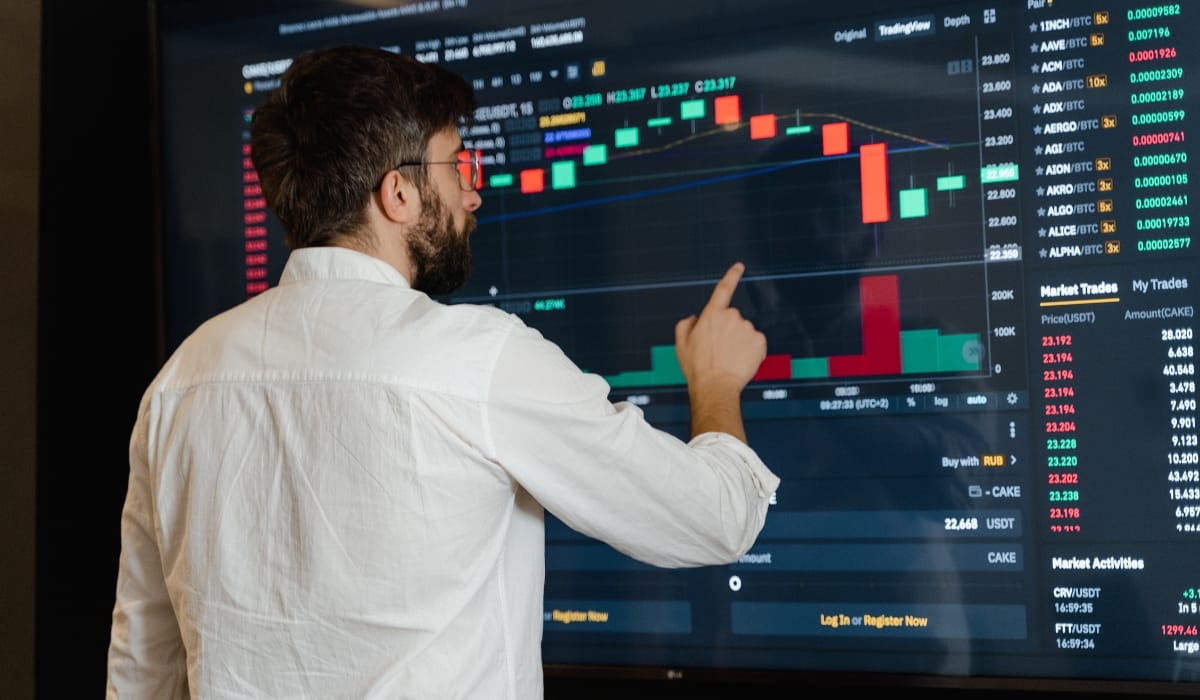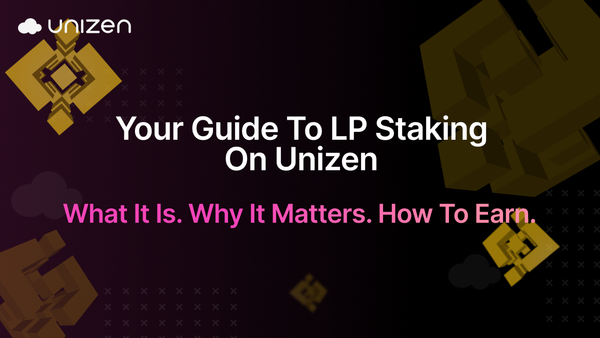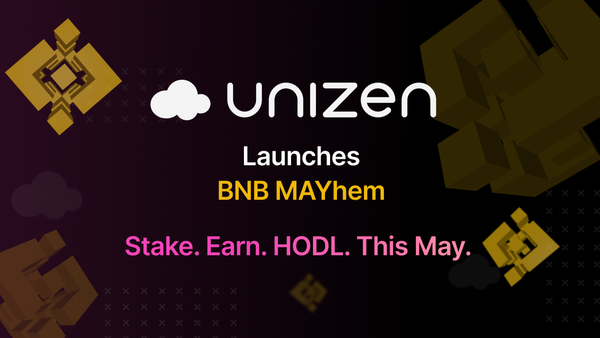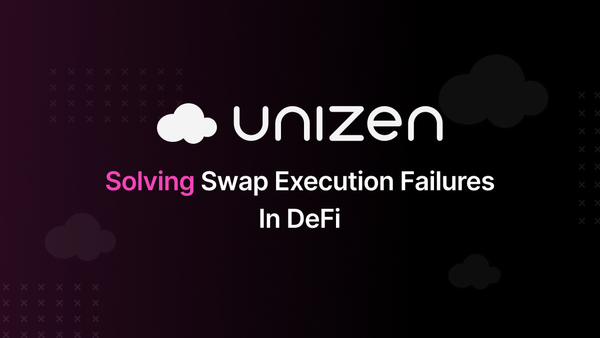How To Make A Crypto Trading Bot
Learn how to make a crypto trading bot from scratch. This guide covers the process of planning, the tools you can use, coding, testing, and deployment.

According to reports, the global cryptocurrency market, which was at $1.6 billion in 2021, is set to grow by 2026 to $2.2 billion. This growth is due to people's increased interest in adopting blockchain technology and their need for more reliable trade mechanisms. Automated tools such as crypto trading bots are becoming popular with market expansion. They are in demand because they are always available. They can make decisions based on set rules that human traders might be unable to process, making having the knowledge of how to make a crypto trading bot essential.
What is a Crypto Trading Bot?
A crypto trading bot is a computer program that automatically executes trades according to predefined strategies. It could also directly help users integrate exchanges and perform buy and sell orders for them.
Before you build a trading bot, you must understand its foundation. This means knowing the basics of crypto markets and algorithmic trading. These are strategies that traders use to automate the bot for effective execution:
- Cryptocurrency Markets: Cryptocurrency markets are usually very unpredictable. Unlike the old stock markets, the cryptocurrency market is open 24/7. These 24/7 operations have been a challenge for stockbrokers, and that's where crypto trading bots come in. They can work the whole day and use real-time data to make decisions; the emotional biases of human traders cannot impact them.
- Algorithmic Trading: Also called 'algo trading,' it uses algorithms to trade crypto. These algorithms use different factors, including price movement, market volume, and technical indicators. For example, an algorithm might buy a cryptocurrency if its price drops by 5% quickly. It would then sell it when the price rises by 10%.
Types of Traders and Their Strategies
Different types of traders use bots, each with their own strategies:
- Quantitative Traders: These traders rely on data and statistical models to make decisions, and their bots analyze huge amounts of historical data. They find patterns and trade based on them.
- High-Frequency Traders (HFT): HFT bots focus on making many small trades quickly; these traders try to profit from small price changes in seconds or milliseconds. The bots are fast and efficient, often making hundreds or thousands of daily trades.

Planning Your Trading Bot
When creating your crypto trading bot,planning and having the right strategy is important. Your bot will only follow the rules you programmed, so you must provide a good base for it. The two main aspects are your trading strategy and risk management.
Defining Your Trading Strategy
First of all, determine your crypto trading bot is your trading strategy. The reason is simple: a good plan needs a strong basis. There are, however, a few strategies, and depending on your bot, you will want to use one. It also depends on how much risk you are willing to take. The strategies include:
- Trend-following Strategy: This strategy is based on the idea that price movements are trends. A trend-following bot buys an asset when its value is high and sells immediately when the price starts to fall. The currency's prices, therefore, follow a positive or negative wave. So, if crypto goes up, the bot will continue buying and riding the wave until the trend slows or reverses.
- Arbitrage Strategy: This strategy aims to profit from price differences between exchanges. If Bitcoin were cheaper on Exchange A than on B, an arbitrage bot would buy it at A and sell it on B for a profit.
- Market-making strategy: These robots provide liquidity by placing simultaneous buy and sell orders. The principle is to profit by using the small difference between the bid price (buy) and the ask price (sell). This model works best with highly liquid stocks with the most price variation. At times, these stocks can give a high yield in profit.
Pro tip: If you create your bot in the long run, a trend-following approach is the most profitable strategy. By following this style, you can make the maximum possible profit. Consider arbitrage or high-frequency trading if you are after a small gain in the short run.
Risk Management While Creating Your Crypto Trading Bot
As a trader, you should be willing to take risks. Not even the most efficient strategies can operate without proper risk management. Risk management will assist you in making up for your investment when creating the bot. There are two key aspects of risk management in creating a crypto trading bot:
- Stop-Loss Levels: A stop-loss is the price at which your bot will exit a trade to prevent further loss. For example, if you set a stop-loss at 5%, your bot will not sell that asset unless it drops by another 5%. Such a measure would aid in repressing losses due to unexpected market decline.
- Take-Profit Levels: Take-Profit levels are opposite to stop-loss ones. Here, you can set the bot to sell, let's say when an asset hits a certain profit target. This prevents you from missing out on profits if the market reverses.
Choosing the Right Tools
To build a good trading bot, it is vital to choose the right tools. They will lay a good foundation for your bot to perform well in the crypto market. You will choose a programming language and a crypto exchange. These tools will shape your bot's efficiency, functionality, and security.
There are many tools for trading bots. But let's discuss the programming languages that most developers use:
- Python: Python is the most popular trading bot language. It's simple and has many libraries, So It's great for beginners. It also has strong data analysis tools, perfect for bots that track market trends. However, Python is not the fastest language, so it may not be ideal for high-frequency trading (HFT).
- JavaScript: JavaScript is flexible and useful for web-based trading interfaces. It's lightweight and good for real-time apps. However, it lacks Python's data analysis libraries.
- C++: It's fast, making it a good choice for HFT bots, where performance is critical. However, the downside of C++ is that it is complex and more suitable for experienced developers.
APIs and Exchange Integration
After choosing a programming language, use the exchange's APIs to integrate your bot with a crypto exchange. These APIs allow your bot to access market data, place orders, and manage accounts. When choosing your bot's APIs, consider their functionality, security, fees, and liquidity.
- API Functionality: Ensure the exchange's API supports your bot's needs. It must provide real-time price updates and allow order placement.
- Security: Also, protect your API keys. Choose exchanges with strong security, like 2FA and IP whitelisting. IP whitelisting limits bot actions to specific IPs.
- Fees and Liquidity: Use exchanges with low fees and high volumes, like Binance. This will cut costs and ensure smooth trades.

Backtesting and Optimization
After developing your cryptocurrency trading bot, backtest it. It means using historical market data to see how your bot's strategy would have performed in the past. This process helps you assess the bot's effectiveness before putting your money on the line.
You can feed your bot data on its past performance. This includes price movements, volume, and volatility. Then, you can see if it would have made profitable decisions or incurred losses. Backtesting tests the bot in different scenarios. These include rapid price swings and long, stable periods. So this provides a clearer picture of how well the strategy would perform while trading.
Adjusting Parameters Based on Results
After you run backtests, you'll likely find areas where you can improve your bot's strategy. If your bot buys too early or sells too late, adjust the entry for price movements. This process is called optimization, and it involves adjusting the parameters to enhance the bot's performance.
Optimization might involve altering factors such as:
- Entry and exit points for trades.
- Risk management settings, like stop-loss and take-profit levels,
- Timeframes for monitoring price trends or making decisions.
Don't over-optimize because it can cause overfitting. This is when the bot may become too tuned to past events and struggle to adapt to sudden market changes. We must balance flexibility in the strategy for various market conditions. Backtesting and optimizing your bot can boost its success in the live market.
Deploying The Crypto Trading Bot
After you've developed, tested, and optimized your crypto trading bot, the next step is to deploy it. This is when you launch your bot in a live trading environment. This step is both exciting and nerve-wracking. You'll shift from a controlled, simulated environment to the chaos of live markets. Your bot will finally make trades in real markets and place trades based on your programmed strategy. However, live deployment has risks, so you should take careful steps to cut potential losses.
Starting with Small Capital
It's always advisable to start small when you first deploy your bot. Trading with limited capital reduces your risk. It lets you watch how the bot performs in live conditions. Even with thorough testing, real markets can behave unpredictably. Sudden liquidity drops or technical glitches could impact your bot's performance.
Starting small also lets you test your bot. You'll see how it responds to slippage, order speed, and sudden market changes. This real-world experience will guide future refinements to the bot's behavior.
Monitoring Bot Performance
After your bot goes live, you will need to track it at all times. Even the best-designed bot needs oversight. It must work as expected. To ensure your bot's long-term success, conduct performance metrics reviews regularly. They include the trade success rate, total profit, and any unexpected behavior.
If the bot deviates from its strategy or performs poorly, pause it. Then, reevaluate your approach. Monitoring can prevent losses and keep your trading strategy on track.
Regular Updates to Adapt to Market Changes
Cryptocurrency markets are highly dynamic. What works today may not work tomorrow. So, you must regularly update your bot to reflect current market conditions. For example, a strategy that thrives in a bull market may struggle in a volatile one. So, you must adjust it to keep your bot effective.
Adapting the bot to new trends can include refining your trading strategy, optimizing parameters with recent data, or adding features like stop-loss adjustments to reduce risks. Syncing the bot with the latest market developments keeps it competitive and profitable.
Security Practices to Protect Investments
- Use API keys with limited permissions. Rotate them at regular intervals. Store them securely, preferably encrypted.
- Host your bot on a secure server or VPS with strong firewalls. Keep it updated to fix vulnerabilities.
- Enable two-factor authentication (2FA) for exchange accounts and server access.
- Install SSL/TLS encryption to secure communication between your bot and cryptocurrency exchanges.
- Regularly audit security and review code to find and fix vulnerabilities. Also, check for unusual bot behavior.
- Set up backups to occur regularly and store them offline securely to protect against data loss.
- Use rate limiting and anti-DDoS to prevent denial-of-service attacks.
- Make sure all accounts related to your bot have strong, unique passwords. This includes your exchange and server accounts.
Just like the markets, your bot also changes its performance. Review your key performance indicators (KPIs) from time to time. Your KPI should include win rates, profit margins, and risk exposure. This allows you to catch any inefficiencies or problematic patterns that might develop. You must check your strategy and adjust if the bot's success rate drops or starts losing money.

Advanced Considerations in Crypto Bot Development
Once you master the basics of creating a crypto trading bot, advanced techniques can boost its performance. Using AI, ML, and custom algorithms can give you a competitive edge. They can make your bot smarter and more adaptive, speeding up the trading process.
Incorporating AI and Machine Learning
AI and ML are now key tools in finance, especially in algorithmic trading. Your bot can use machine learning algorithms. They can learn from historical data and improve their decision-making over time. An AI bot can find patterns and predict market moves better than a rule-based one.
You can train a machine learning model to recognize complex links between assets. For example, a crypto's price movements might impact other cryptos. This adds sophistication beyond normal trading strategies, like trend following or arbitrage. Your bot can improve its trading by analyzing past data. It should adapt to new market behaviors. This will boost its chances of making a profit.
Developing Custom Indicators and Algorithms
Most traders use standard indicators, like moving averages or RSI (Relative Strength Index). But custom indicators can give your bot a unique edge. Custom indicators for your trading strategy will personalize your market analysis.
For example, create an indicator if your strategy is to analyze momentum in volatile markets. It will measure momentum spikes and flag them as buy or sell opportunities. Custom algorithms can consider multiple factors simultaneously, including price, volume, and time intervals. They can make decisions based on more complex conditions than traditional models.
There are, however, some challenges to using advanced techniques, such as:
- AI and machine learning models need large amounts of data to work well, so collecting and processing that data is challenging.
- Training AI models can be time-consuming, requiring considerable computational resources and patience.
- Creating custom indicators requires a deep knowledge of market dynamics and programming. This adds complexity to the process.
- Testing is vital with advanced strategies. Faulty trading algorithms or poorly trained AIs can cause huge financial losses.
- Using AI and custom algorithms requires more technical knowledge, which raises the learning curve and the risk of implementation errors.
- Backtesting and simulations are necessary to validate these techniques. They add time and effort to the development cycle.
Conclusion
A cryptocurrency trading bot needs a solid strategy, good technology, and constant improvement. It's not just about automating trades; it's mainly about building a tool to grow with the market and your trading goals. To succeed in the fast-changing world of crypto, you need to know how to make a crypto trading bot that is vigilant and adaptive.



